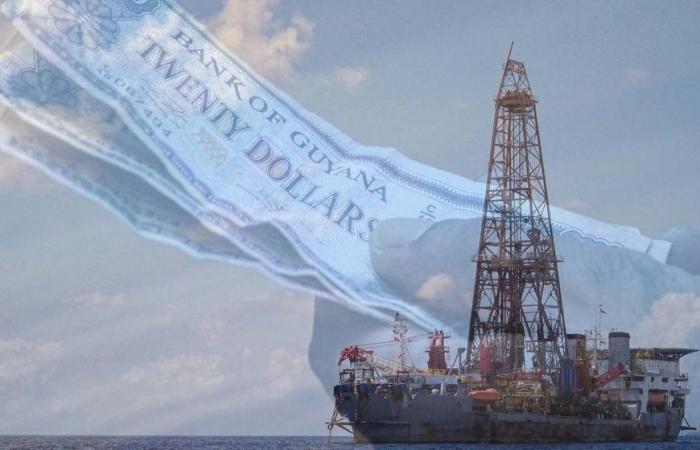Guyana’s emergence into the oil market has been rapid and powerful, especially considering that this country did not produce a single barrel of oil in 2015 and that the size of its population barely reaches 800,000 inhabitants. Few would have bet that a few years later this country would become the world’s main source of ‘new oil’. Not satisfied with that, this week a new project was presented that, if approved, could further increase the country’s crude oil production forecasts. Until now, it was believed that Guyana’s oil ceiling would be set at around 1.2 million barrels per day, an already exorbitant figure for a country of its size and whose oil is only found in ultra-deep waters. However, a new ExxonMobil project, called Hammerhead, could push production to nearly 1.5 million barrels of oil per day.
Guyana’s oil history is unparalleled in the crude oil industry. The production of this small country has registered strong growth in the last five years, after producing its first barrel of oil in 2019 (‘four days ago’), the consortium led by ExxonMobil has continued to make discoveries in the prolific Stabroek block, where Current estimates of recoverable oil equivalent resources are around 12 billion barrels, according to the International Energy Agency.
The third floating production unit (FPSO), Prosperity, was commissioned in December 2023. Now, It is expected that in the next three years three more FPSO units that are already approved will be put into operation with a total capacity of 750,000 barrels per day. (which will be added to the 650,000 barrels that Guyana already produces). Excluding the new Hammerhead project, the current pipeline would see production peak near 1.3 mb/d in 2028 before declining to 1.1 mb/d in 2030.
“Guyana, driven by the Stabroek block led by ExxonMobil, has become a major producer and explorers continue to find new resources in its territorial waters,” the IEA said in its latest oil report. Many will wonder why Guyana is producing so much oil in such a short time. The secret is the close collaboration between Exxon and the Government. One of the elements that has had the greatest relevance is that the discoveries are located at sea, which significantly speeds up administrative procedures, which are supported by the Government of Guyana, which encourages and facilitates this type of work and investments, sector experts explain to elEconomista.es.
Hammerhead is the ‘icing on the cake’
The Hammerhead project will be the seventh that Exxon will carry out in Guyana, if its approval is closed and its development is confirmed in the coming years. This is the project that will generate the least production of all those that Exxon has developed, with the exception of Liza 1, the first of the American firm in the South American country. According to the oil company’s calculations, The project will generate 180,000 barrels of oil per day when it is fully operational, in principle, in 2029 if everything goes as the American company expects.
Thus, the country’s production would reach 1.5 million barrels per day that year, the production level of an important member of the Organization of Petroleum Exporting Countries (OPEC) such as Nigeria. It would mean doubling the country’s production levels expected for next year.
For Exxon, Guyana has become an oil paradise, its fastest source of crude oil production at the moment, and with one of the lowest extraction costs on the planet, around $35 a barrel, according to data published by Bloomberg. With these figures on the table, the oil company’s intention is to continue investing as much as possible in the country; Alistair Routledge, head of the company in Guyana, made it clear this week, stating that “the objective we are working on is to maintain the cadence of new projects”, which, until now, means opening a new extraction area every 18 months.
The fact that the latest project, Hammersmith, is less productive than the previous five were, does not imply, as Exxon explains, that the country is exhausting its oil production potential as new wells are opened. “We have planned the right solution for this particular resource, in this region,” said Routledge. “To get other resources we hope to build larger facilities,” he explains.






